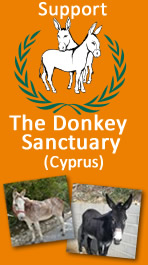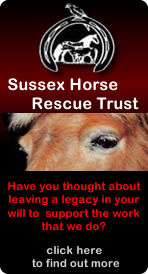
Horseytalk.net Special Interview
Christine Purdy
INDIA BUILDING HIGH-RISES ON THE BACKS ON DONKEYS
Christine Purdy, a Trustee of The Donkey Sanctuary, has been on a 12-day tour of Donkey Sanctuary projects in India and Nepal with Julia Smith and Natasha Chamberlain of the International Department.
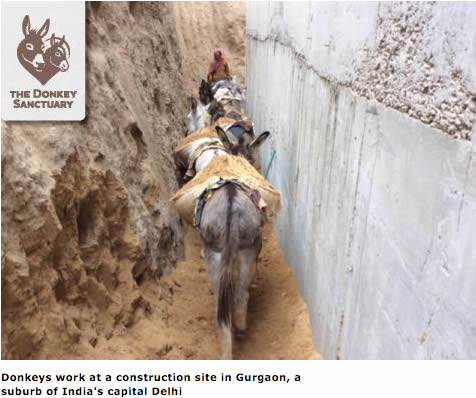 Just south of Delhi is the area known as Gurgaon. When I first came to India in the eighties, Gurgaon was the back of beyond. It was a forgotten area where wealthy people had their "farms", in reality mostly summer homes to escape the searing heat of downtown Delhi.
Just south of Delhi is the area known as Gurgaon. When I first came to India in the eighties, Gurgaon was the back of beyond. It was a forgotten area where wealthy people had their "farms", in reality mostly summer homes to escape the searing heat of downtown Delhi.
Then suddenly, it seems, it was re-discovered. Housing prices in Delhi went sky-high, and there were not sufficient homes for an aspiring population (where else have we heard that?!). So developers looked around and, hey presto, Gurgaon: Canary Wharf on steroids! Not only are there the now common canyons of sterile glass office blocks, but also there are acres upon acres of 20-30 storey apartment blocks, with more and more under construction.
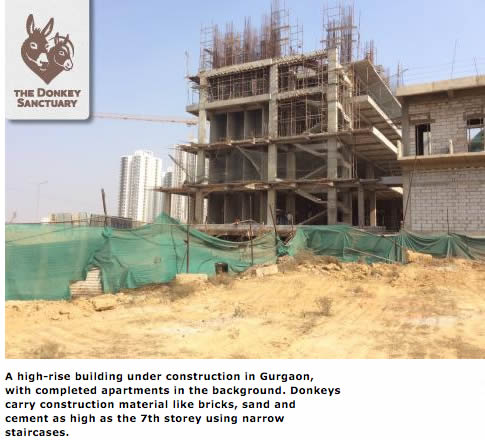 Now you may think that the most common building material is the architect's new favourite—glass—with concrete, steel, cement and breeze blocks making up the remainder, and you would be almost correct, but you would also be missing one essential ingredient: bricks. Bricks are still required in various nooks and crannies of even the highest of apartment blocks, and bricks are generally brought on the backs of donkeys, at least up to the height of the 7th storey.
Now you may think that the most common building material is the architect's new favourite—glass—with concrete, steel, cement and breeze blocks making up the remainder, and you would be almost correct, but you would also be missing one essential ingredient: bricks. Bricks are still required in various nooks and crannies of even the highest of apartment blocks, and bricks are generally brought on the backs of donkeys, at least up to the height of the 7th storey.
You might find it hard to imagine, but a very large proportion of these multi-storey apartment buildings have donkey, as well as human labour at their very origin. First of all they are involved in removing the excavated rubble, putting donkeys at the very beginning of work on almost every construction site. Later they take bricks, cement or other building materials up as far as the 7th floor. For example, with brick filled panniers on either side of their backs, donkeys climb the unprotected cement stairs that later become the fire escapes of these great monoliths. The stairs are narrow and steep, but although the donkeys are sure-footed there are not infrequent fatal accidents—just think about the angle and the dead weight of forty or more bricks pulling ever back and down on the climb up narrow stairways that have no guard rails. After the 7th storey the machines take over, but for the life of me I cannot think why they do not begin at the beginning other than the obvious—cheap labour.
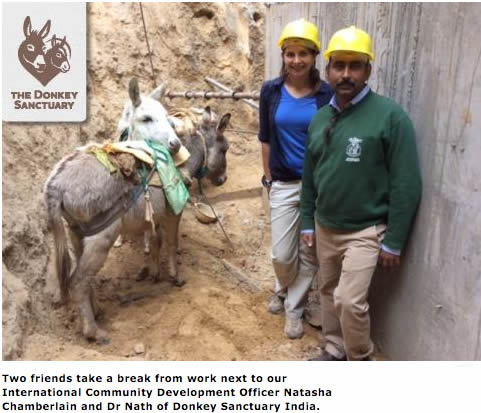 Another job for donkeys on a construction site is carting sand and earth, because once the cement walls of the underground basements and parking lots are hardened, the external sides need to be filled in again, so a mind-bendingly repetitive task is to dig the sand from pile A and dump it in hole B. There and back, there and back, until the hole is level with the ground once more. By the way, this task earns the donkey 100 rupees a day (about £1) and its owner likewise 100 rupees a day. One woman I spoke to had eight children, plus her own and her husband's parents to look after. So she continued to travel the 30 kilometres a day to work her four donkeys for this pittance. Somehow it is economically viable to make the daily journey for herself, but like many others she must leave the donkeys to fend for themselves on the construction site overnight.
Another job for donkeys on a construction site is carting sand and earth, because once the cement walls of the underground basements and parking lots are hardened, the external sides need to be filled in again, so a mind-bendingly repetitive task is to dig the sand from pile A and dump it in hole B. There and back, there and back, until the hole is level with the ground once more. By the way, this task earns the donkey 100 rupees a day (about £1) and its owner likewise 100 rupees a day. One woman I spoke to had eight children, plus her own and her husband's parents to look after. So she continued to travel the 30 kilometres a day to work her four donkeys for this pittance. Somehow it is economically viable to make the daily journey for herself, but like many others she must leave the donkeys to fend for themselves on the construction site overnight.
Happily, having described the heart-rending situation of these donkeys and owners, I can tell you some better news. The Donkey Sanctuary India personnel have been working with the donkeys at the construction sites for some time now. Not always the same ones, but news gets around. Young donkeys are not worked before they are four, better five, years old, although they are brought along to the site for their familiarisation and training. 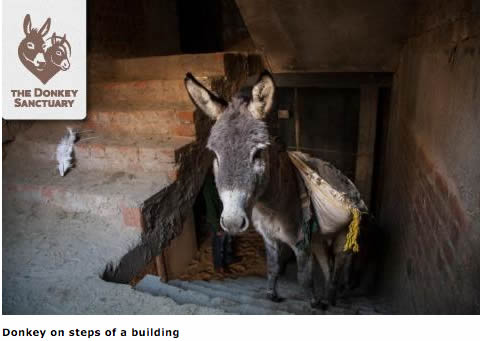 The panniers are better balanced, and the beating has decreased. The wounds and lameness continue to be horrendous, and it would nice to be able to say that we had linked in to the government services to improve their lot. Well, we're working on it, but their focus is more on so-called production animals. I wonder whether any of them live in these apartments once they are built, and I also wonder whether they realise a donkey is at the base of their lovely new home.
The panniers are better balanced, and the beating has decreased. The wounds and lameness continue to be horrendous, and it would nice to be able to say that we had linked in to the government services to improve their lot. Well, we're working on it, but their focus is more on so-called production animals. I wonder whether any of them live in these apartments once they are built, and I also wonder whether they realise a donkey is at the base of their lovely new home.
Someone we do work with is Anjali Gopalan, famous throughout India for establishing the earliest HIV/AIDS NGO, and this is again good news. A few years ago Anjali branched out into animal welfare and founded her own Small and Large Animal Organisation in a small village outside Faridabad. Within three years this has become the most amazing home to all manner of animals and birds, ranging from ducks to donkeys, dogs and cats to water buffalo and roosters to emus and, believe me, a lively range in between. This extraordinary menagerie is fed and watered daily and given shelter and health care. We know Anjali because one day she phoned to ask whether our vet could come out and look at a sick donkey. Later we asked whether she could take in a donkey from a building site that had badly twisted its hoof and could never work again. It was yes in both directions, and a friendship began born of the mutual professional respect that has been forged on both sides.
All in all, a completely astonishing day, going from the heart-rending to the heart-warming. It's humbling to think of what the donkey bears upon its back, isn't it?



